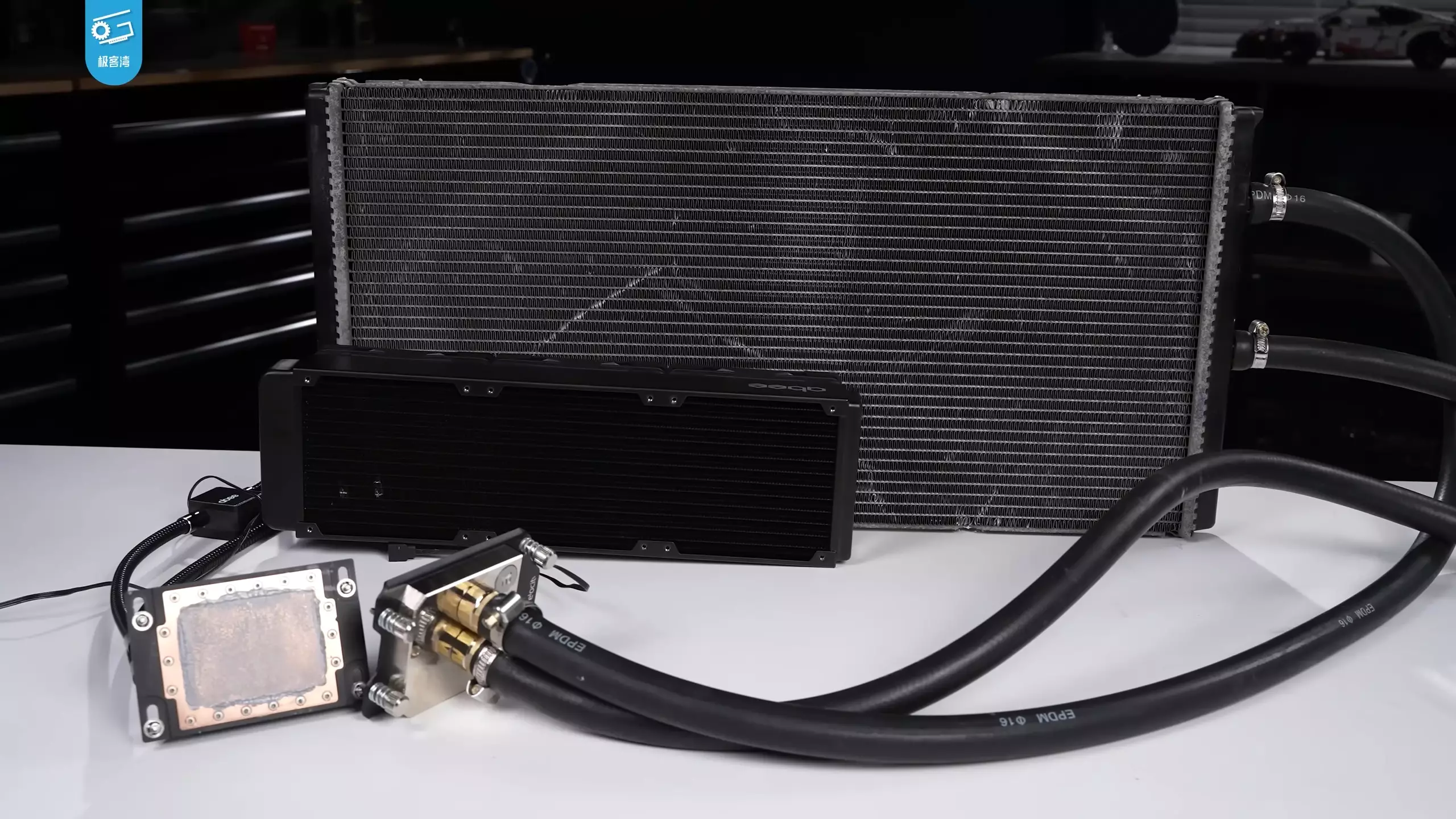Innovative thinking often pushes the boundaries of traditional practices, especially in the realm of high-performance computing. The recent experiment of repurposing automotive cooling systems for overclocking CPUs exemplifies this mindset. While it might sound absurd—using a car radiator to cool a processor—the underlying motivation is to explore whether extreme modifications can unlock new levels of performance. This approach questions the orthodoxy that liquid cooling and custom PC setups are the only viable ways to tame high-end processors. It sparks a conversation about cross-industry ingenuity and the bounds of what’s technically feasible, however impractical it might seem at first glance. This kind of experimental spirit embodies the essence of technological progress: pushing limits, even if it’s to prove what shouldn’t be done.
Evaluating the Feasibility of Automotive Cooling for CPUs: A Balancing Act
At the core of the experiment is the AMD Ryzen Threadripper Pro 9995W, an extraordinarily powerful chip with 96 cores capable of reaching 5.4 GHz under optimal conditions. The challenge isn’t just to run it but to push its limits further—hence the drastic cooling overhaul. The idea of integrating automotive parts, such as a BMW M4 radiator and Toyota Highlander fans, into a computer cooling loop is audacious but offers certain insights. Automotive radiators are designed to handle massive heat loads, but they are built for continuous, long-term operation in a high-vibration environment—hardly compatible with the delicate requirements of CPU cooling. The results achieved, reaching 4.9 GHz across all cores, demonstrate that system chaos can sometimes produce temporary gains, but the underlying inefficiencies reveal the impracticality of such methods beyond curiosity-driven experiments.
However, the experiment also highlights a significant challenge: mismatched components. A radiator meant to cool an engine doesn’t transfer heat as efficiently to a CPU, and the pumping mechanisms used are not optimized for such a task. The inability to adequately transition heat away from the processor makes such setups volatile and unreliable. Yet, this speaks to a broader truth in engineering: sometimes, the limitations of existing technology inspire radical ideas, even if only to understand what not to do.
Implications and Insights for Enthusiasts and Industry Professionals
What lessons can be gleaned from this extreme trial? For enthusiasts, it’s a reminder that barriers exist for a reason. Cooling a CPU effectively requires precision, control, and components optimized for thermal management. The creative use of car parts emphasizes that, while innovation is valuable, it must be balanced with practicality and safety. This particular experiment, while impressive from a technical perspective, underscores why such methods are unlikely to see widespread adoption.
Moreover, the experiment highlights the importance of understanding the fundamental principles of thermodynamics and system stability. Pushing hardware to such extremes can yield spectacular results, but the risks—such as damaging expensive components or triggering unpredictable failure modes—are often not worth the fleeting performance gains. Industry professionals should view this as a fun case study in what works and what doesn’t, reinforcing the need for purpose-built solutions in high-performance computing.
In the end, this experiment is not a call to abandon traditional cooling methods but a testament to the creativity that can be sparked when curiosity overcomes caution. It raises awareness that the pursuit of higher performance must always be balanced with scientific rigor and safety considerations. While automotive cooling systems have their place, their adoption in PC cooling remains superficial at best when scrutinized through the lens of efficiency, reliability, and practicality.
In conclusion, innovative experiments like these serve as a vivid reminder that pushing technological boundaries can be both enlightening and cautionary. They challenge the status quo, inspire new ideas, and emphasize the importance of understanding the fundamental limitations inherent in cross-industry applications. For now, sticking to proven cooling solutions remains the best practice, but the spirit of experimentation continues to drive the evolution of high-end computing.

